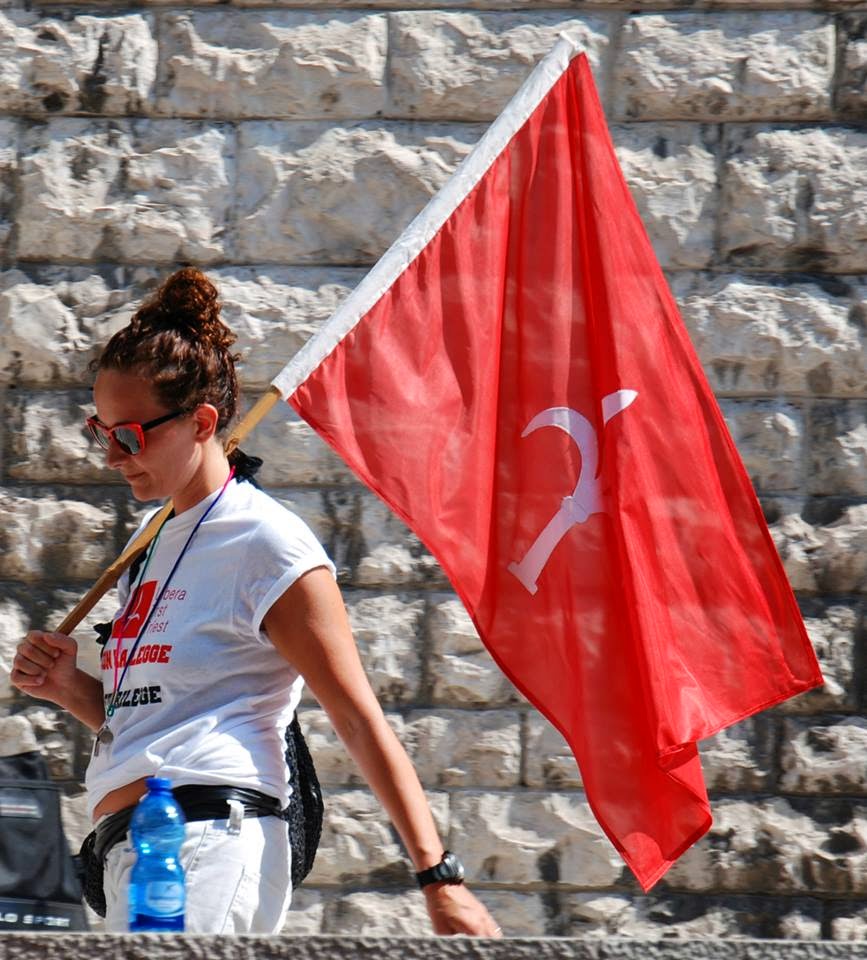THE ENFORCEMENT OF THE RIGHTS OF THE CITIZENS OF THE FREE TERRITORY THROUGH THE ONGOING, HARD, JUDICIAL STRUGGLE
Judge Piero Leanza’s new ordinance [May 7th, 2014] regarding jurisdiction in the present-day Free Territory of Trieste is revolutionary for “Question Trieste”. In other words, for the legal battle to end the simulation of Italian sovereignty over the Free Territory of Trieste and over its international Free Port of Trieste.
In the ordinance of May 7th, Judge Leanza restates what he had already affirmed before, on March 19th, with another ordinance on the same subject:
“… the limitations to the sovereignty of the Italian State – following the events leading to the provisions of the Treaty of Peace of Paris, the Allied Military Government, and the Memorandum of Understanding of October 5th, 1954 (which ratified the impossibility to put the aforementioned provisions into force) – are to be regarded as outdated after the 1975 Treaty of Osimo (which came into force April 3rd, 1977, following the exchange of ratification instruments), with which Italy and Yugoslavia ultimately disposed the ‘partition’ of former Free Territory of Trieste, save for the fulfillment of the 1947 Peace Treaty and London Treaty [sic]’s provisions for the free port”.
So, according to judge Leanza, Trieste wasn’t part of Italy until April 3rd, 1977. But then again, this means Italian laws and obligations wouldn’t apply to then-zone A of the FTT during the Italian administration. Indeed an opinion that might as well rewrite Trieste’s history.
If so, Trieste’s people can at least seek a compensation for the human rights violations occurred from 1954 to 1977. Especially the forced conscription of Trieste’s people in the Italian Army, despite their foreign citizens and the Peace Treaty preventing to do so.
Because according to the new ordinance, from 1954 to 1977 Italy has indeed simulated its sovereignty over the Free Territory despite the Italian Government’s temporary civil administration.
But Judge Leanza’s ordinances are innovative for a number of other reasons.
For instance, what about the previous decisions on jurisdiction? This is the ultimate evidence that they are not final.
This is an open question indeed. One that should be addressed by superior Courts. For example international Courts, or the Free Territory’s own Court. There already is one. There should be more, just as it was during the British-US administration. An administration that correctly exercised the Free Territory’s own jurisdiction.
To tribute the rightful merit, it is important keeping in mind that the new ordinances only exist because of the efforts of Trieste’s people. Citizens who stood before Court seeking answers about jurisdiction.
Without them, the simulation of Italian sovereignty would simply continue.
But there are people standing for the Free Territory of Trieste. There are people who bear on their shoulders this heavy legal battle. They stand for their fellow 200.000 Triestines. Those who are still waiting. And waiting.
Centimeter after centimeter. They are the one winning legality back. Bringing about their own, independent State’s freedom. Never forget about it.
Translated from blog “Environment and Legality” – “Ambiente e Legalità” by Roberto Giurastante

